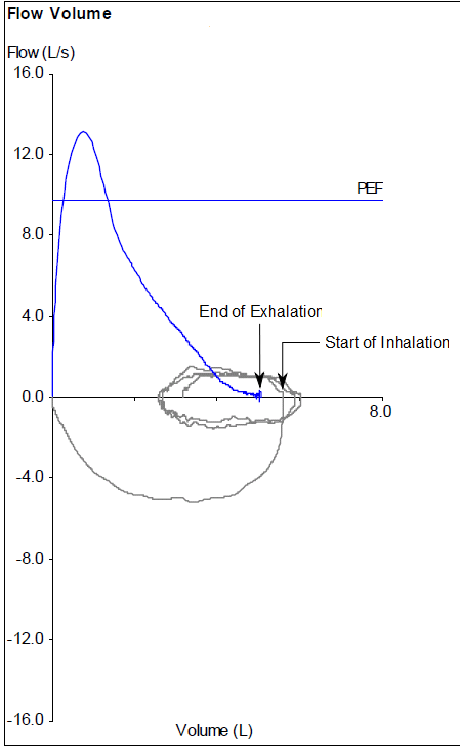When we went through our hardware and software upgrade last August, one of the changes we made was to stop reporting the FEF25%-75% (AKA MMEF, MMFR, MMF). The pulmonary physicians had long since stopped using this value when assessing spirometry results and we had kept it on our reports as long as we did only for inter-laboratory compatibility. Along with other changes we made at that time we decided it was time to drop the FEF25%-75% off our reports.
FEF25%-75% has been used to assess “small airways disease” but more than one of our pulmonary physicians has said that they don’t believe there is such a thing. I’m not a clinician but I’ve always felt that tests and results need to be clinically useful in order to be performed or reported and more than one study has shown little correlation between anatomical findings and FEF25%-75%.
Regardless of whether or not small airways disease is an actual entity my first objection to the FEF25%-75% has to do with the concept that it measures flow in small airways when for most patients it lies within their FEV1. For this reason it has never been clear to me what the FEF25%-75% is measuring that the FEV1 isn’t. More importantly, I have significant concerns about the limitations involved in measuring the FEF25%-75% in the first place.
Continue reading →

